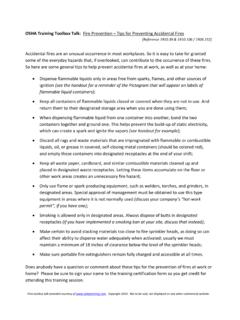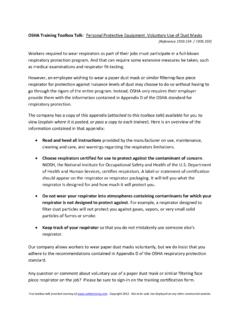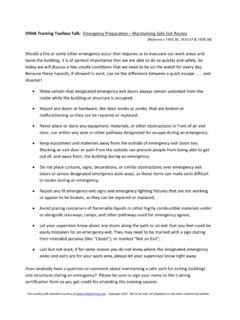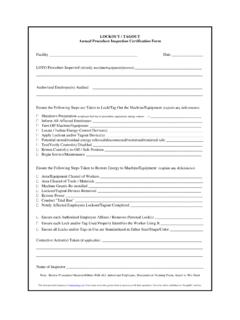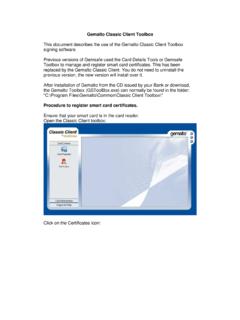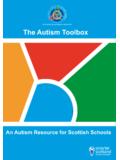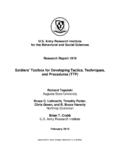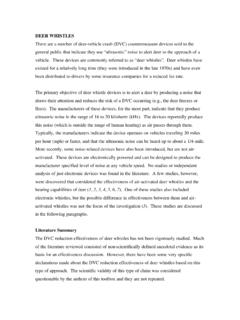Transcription of OSHA Training Toolbox Talk: Hazard …
1 Free Toolbox talk provided courtesy of Copyright 2012. Not to be sold, nor displayed on any other commercial website. osha Training Toolbox Talk: Hazard Communication Chemical hazards and Effects [Reference ) / ] osha s Hazard communication standard, also known as the employee right-to-know standard, is designed to help protect workers from the hazards of exposures to harmful chemicals. An important section of that standard is a requirement that employees be informed about the chemical effects associated with the hazardous products we use at work. However, you may not have heard of many of the terms that appear on some product labels and material safety data sheets to describe chemical hazards & effects, or the terms may not have been adequately defined. So here are some simple explanations of a few key terms: Toxic Over-exposure to a toxic chemical can have a poisonous effect on a person, attacking their total body, or particular organs (example: prolonged exposure to arsenic is toxic to kidneys, lungs, the nervous system, and mucous membranes).
2 Carcinogen The chemical is believed to cause cancer when over-exposure occurs. Irritant The chemical causes a reversible inflammatory effect (such as dermatitis) on living tissue (such as skin, mucous membranes, or lungs) at the site of contact. Corrosive The chemical causes visible destruction of, or visible alterations in, living tissue at the site of contact (example: battery acid is corrosive, will burn the skin). Sensitizer The chemical causes many people to develop an allergic reaction in tissue after repeated exposures (example: isocyanates used in the manufacture some paints and foam products are a sensitizer). Acute Effects the effects of over-exposure to a particular chemical usually occur rapidly, as a result of short-term exposure, and are typically of short duration. Chronic Effects the effects of over-exposure to a particular chemical generally occur as the result of long-term exposure, and are typically of long duration.
3 Flammable Liquid A liquid that emits enough vapors to catch on fire and burn at relatively low temperatures (below 100 degrees Fahrenheit). Example: gasoline is a flammable liquid). Combustible Liquid A liquid that must be heated to 100 degrees Fahrenheit or higher to emit enough vapors to catch on fire and burn. Example: diesel is a combustible liquid. These are very simple explanations of just some of the terms we hear used to describe health and physical hazards . So take the time to review the container label and MSDS for any product that you are working with. Any question or comment about these terms used to describe chemical hazards and effects? Please be sure to sign-in on the Training certification form. Free Toolbox talk provided courtesy of Copyright 2012. Not to be sold, nor displayed on any other commercial website. osha SAFETY Training CERTIFICATION FORM Toolbox Topic Covered: Hazard Communication Chemical hazards & Effects.
4 Date: _____ Company Name: _____ _____ Training led by: _____ PRINT NAME SIGNATURE _____ _____ _____ _____ _____ _____ _____ _____ _____ _____ _____ _____ _____ _____ _____ _____ _____ _____ _____ _____ _____ _____ _____ _____ _____ _____ _____ _____

